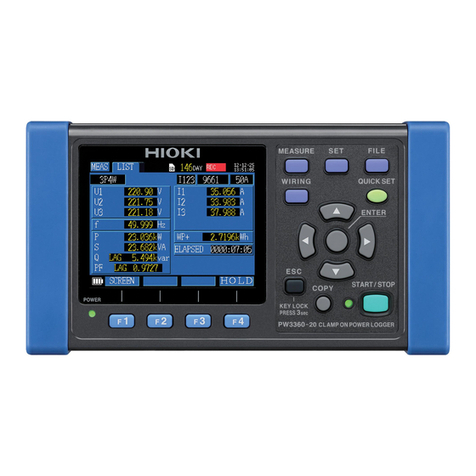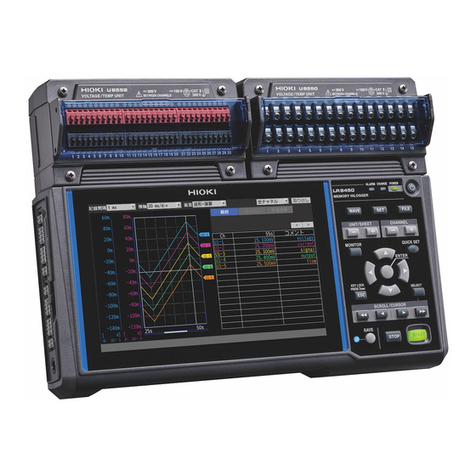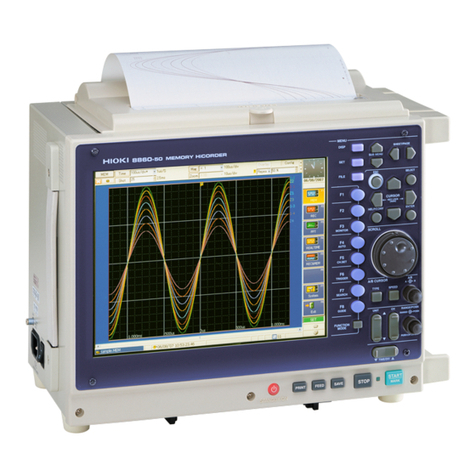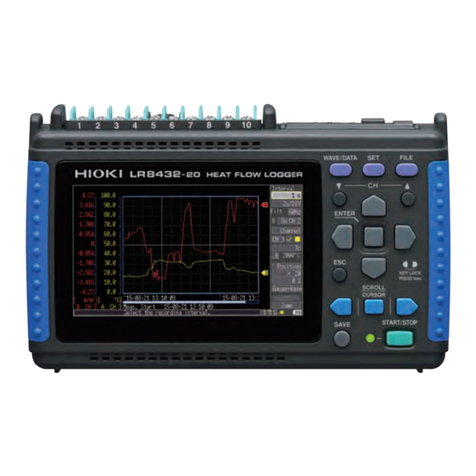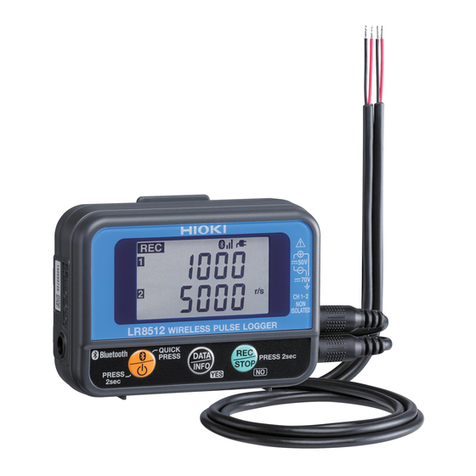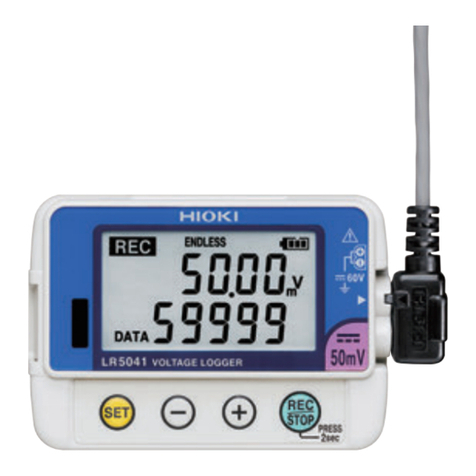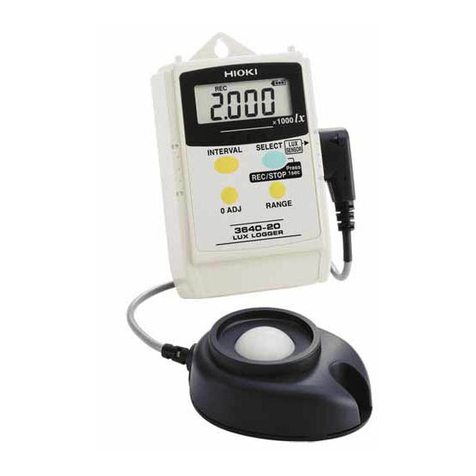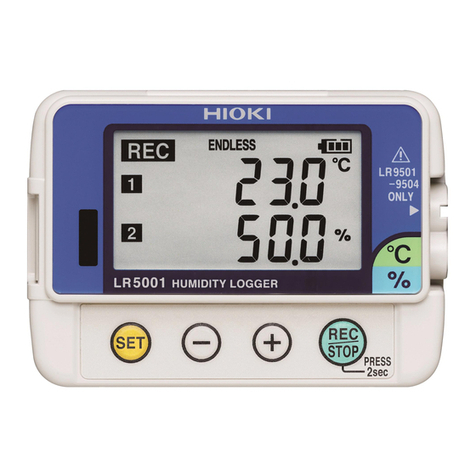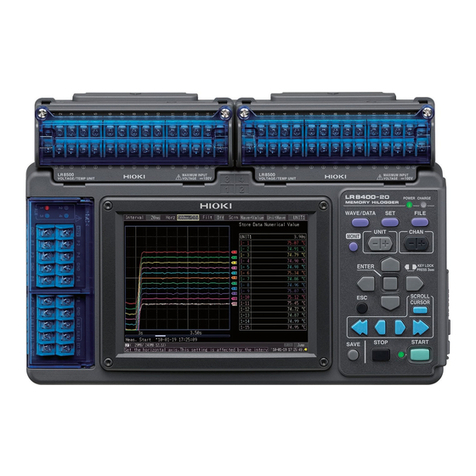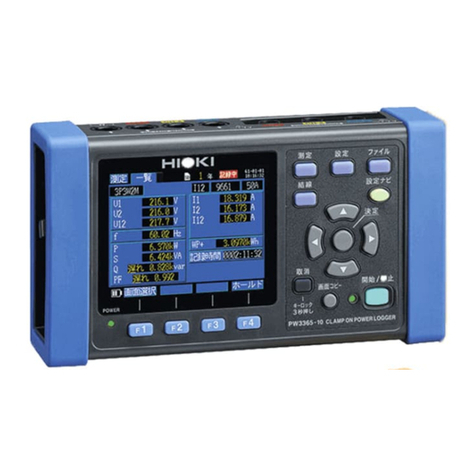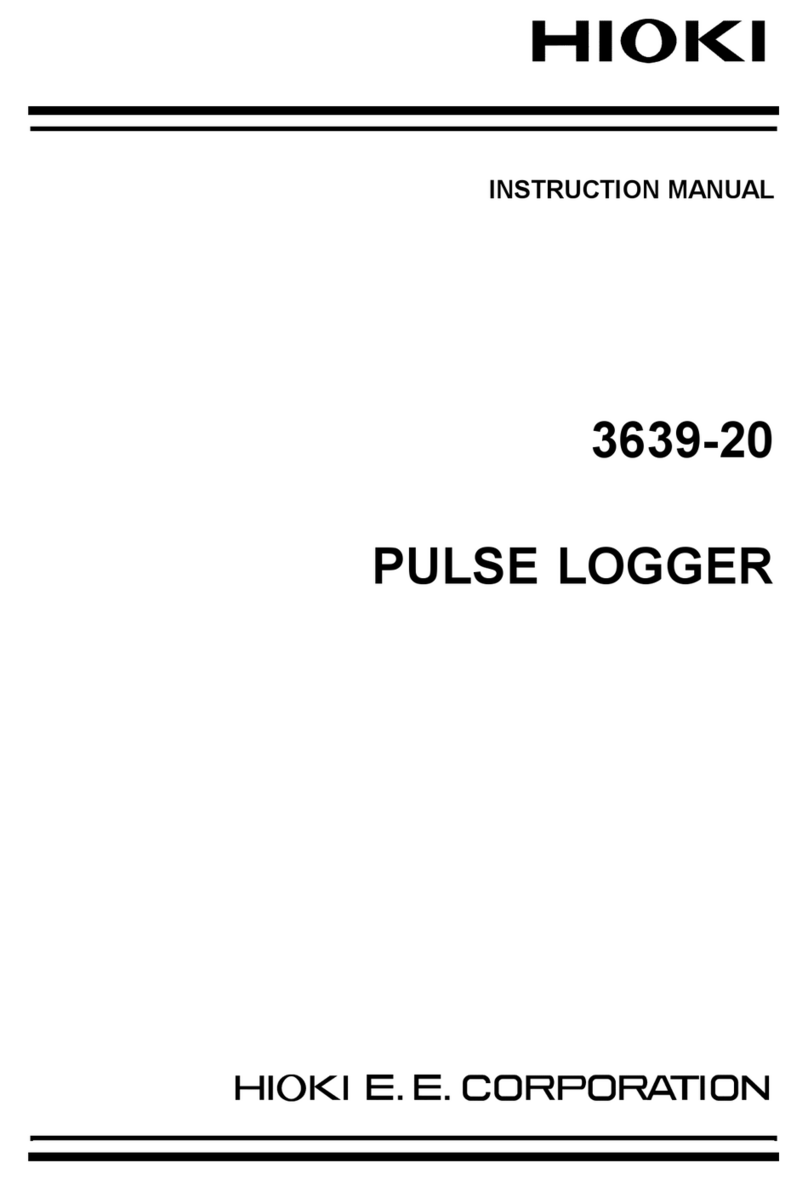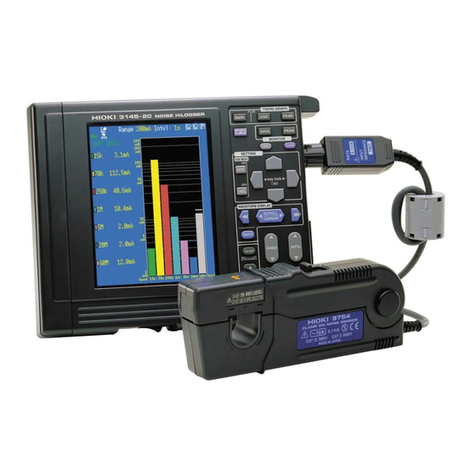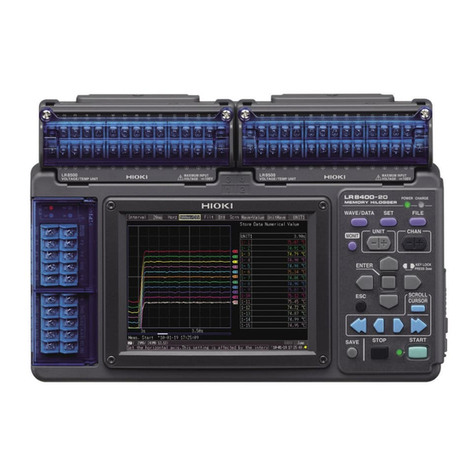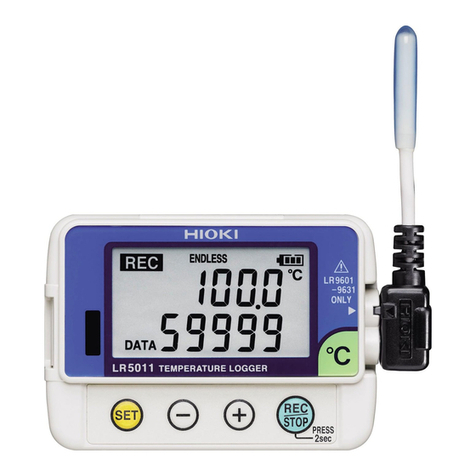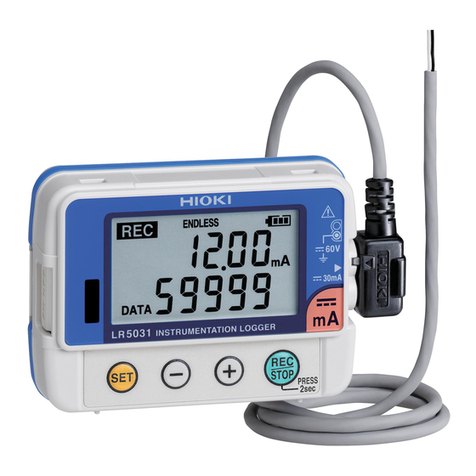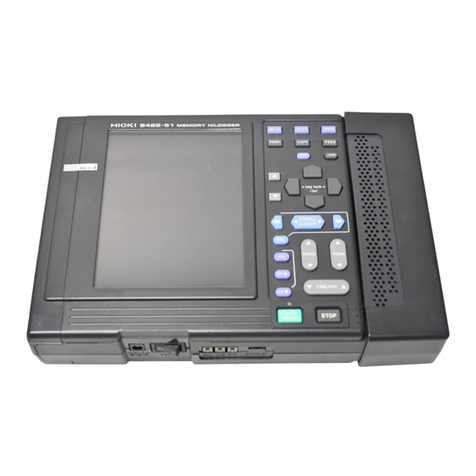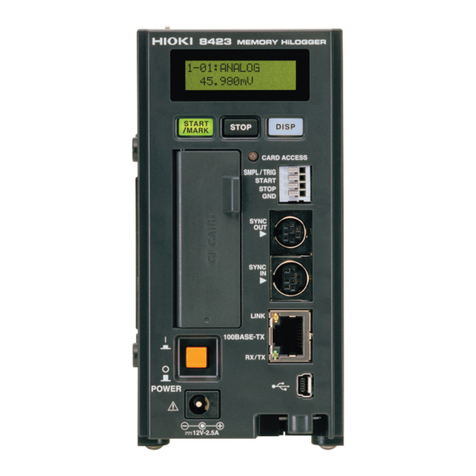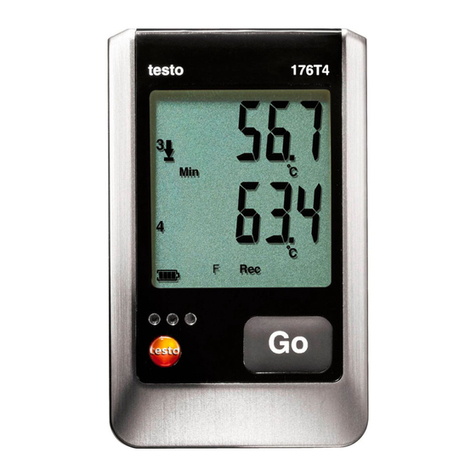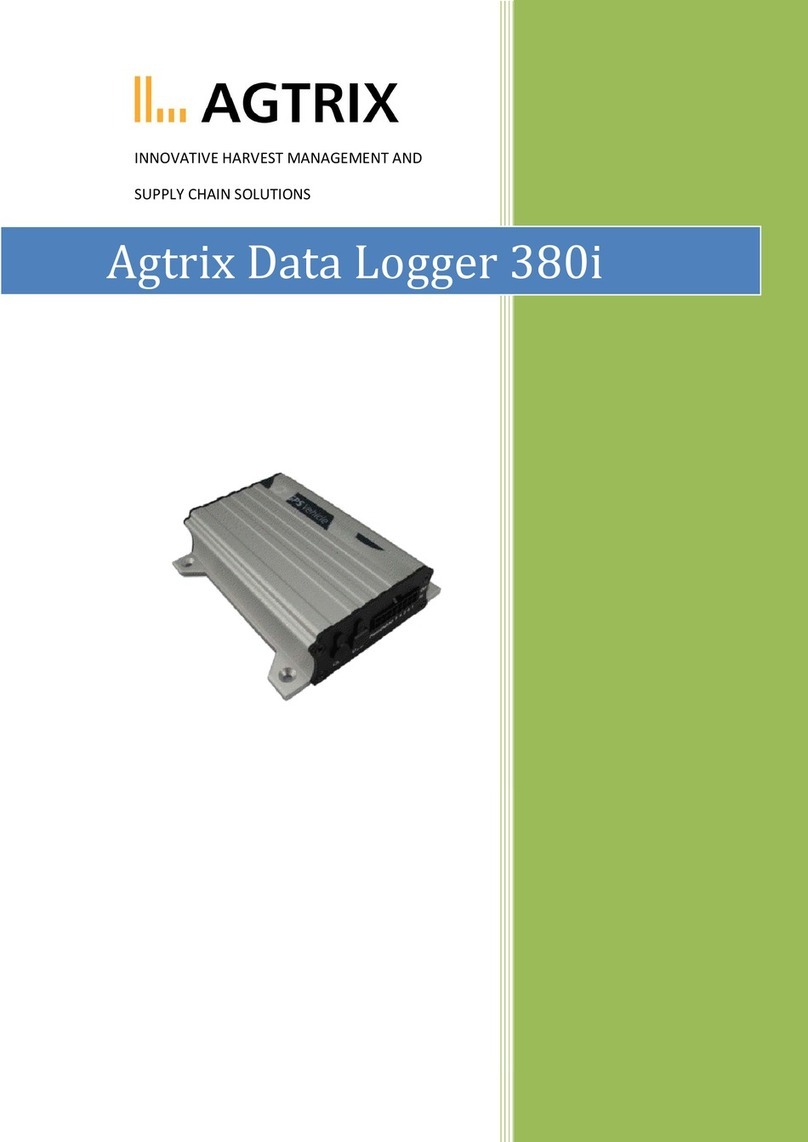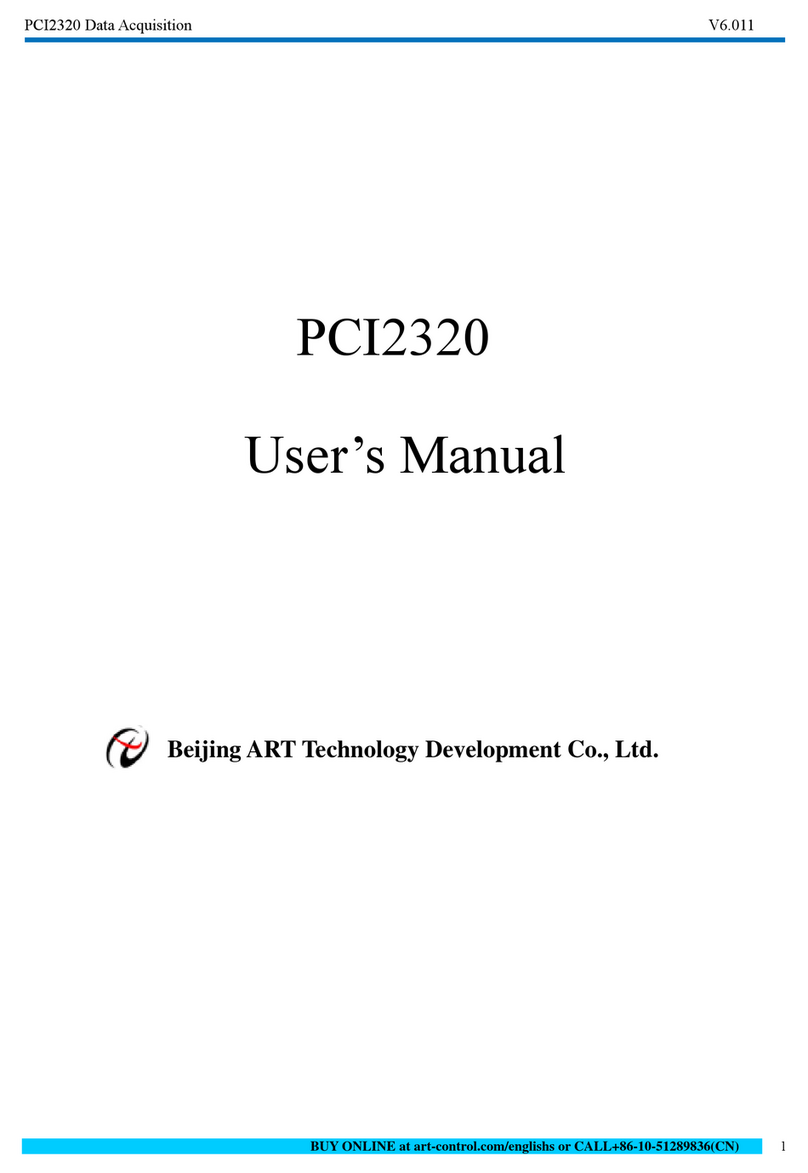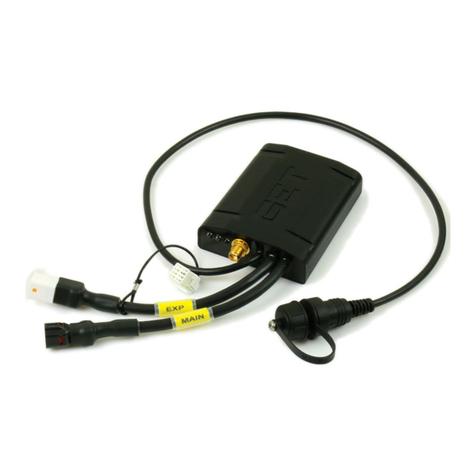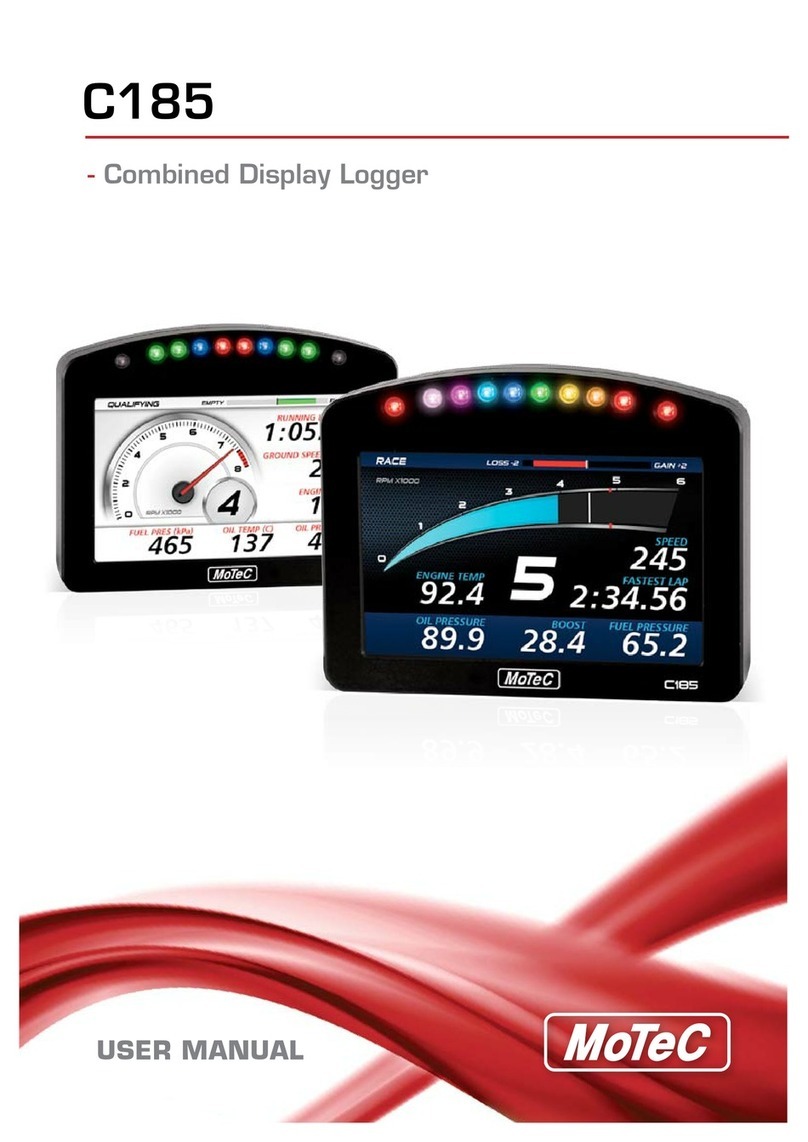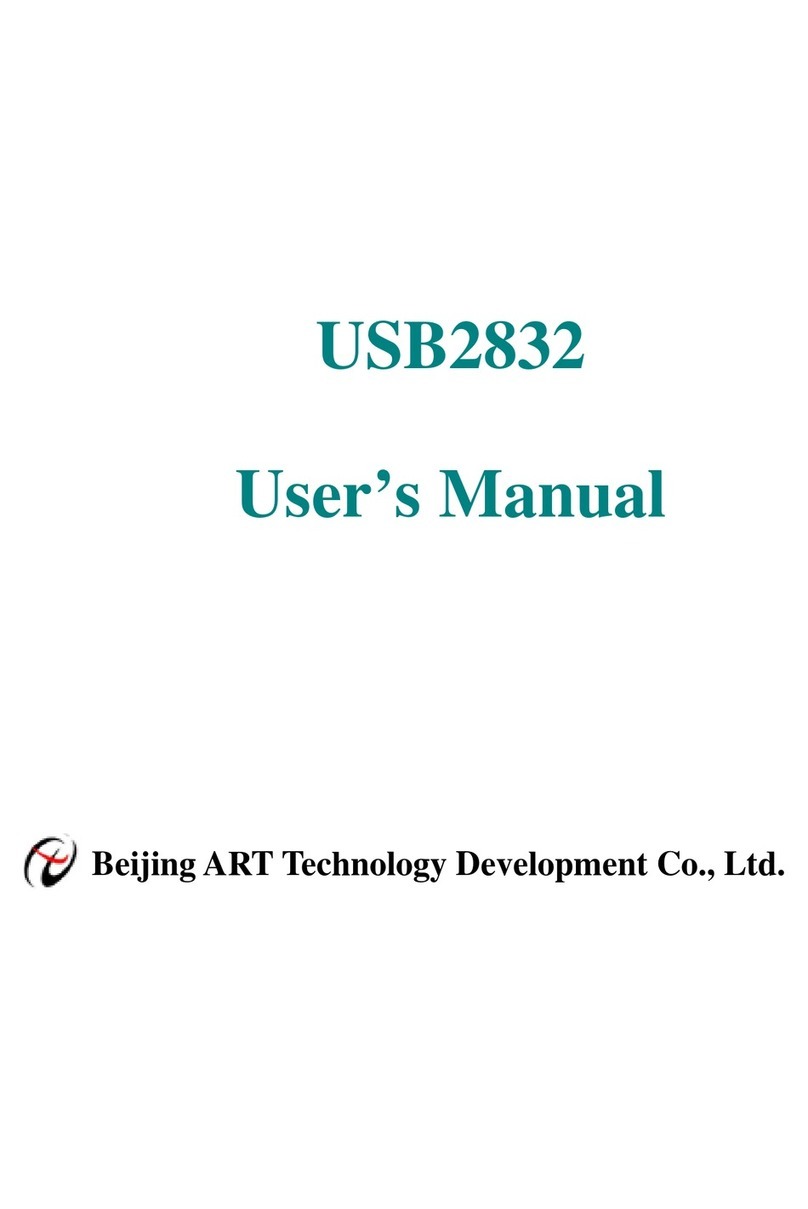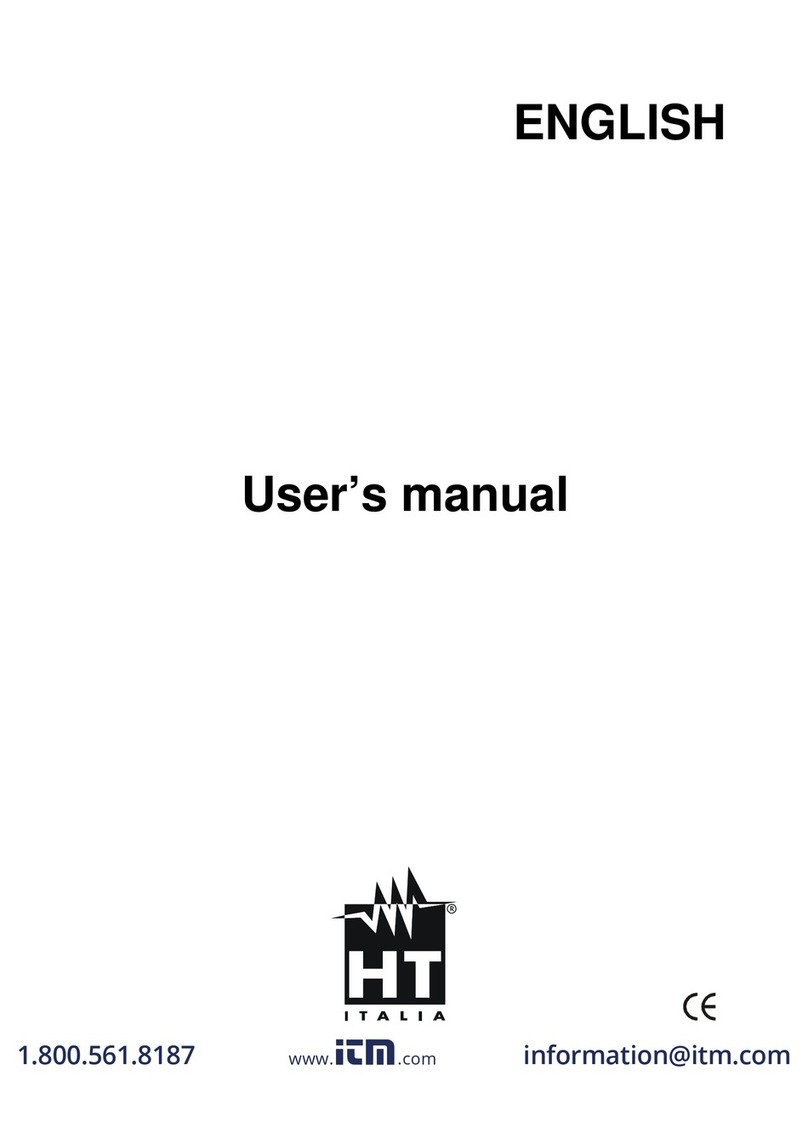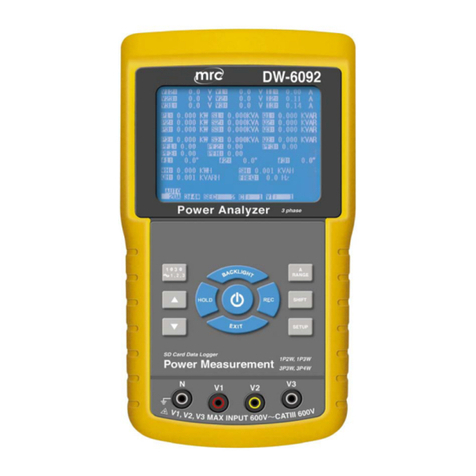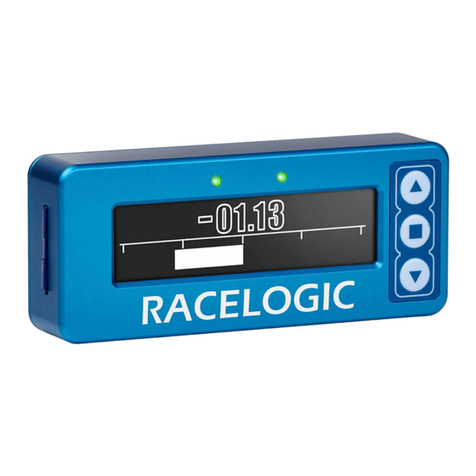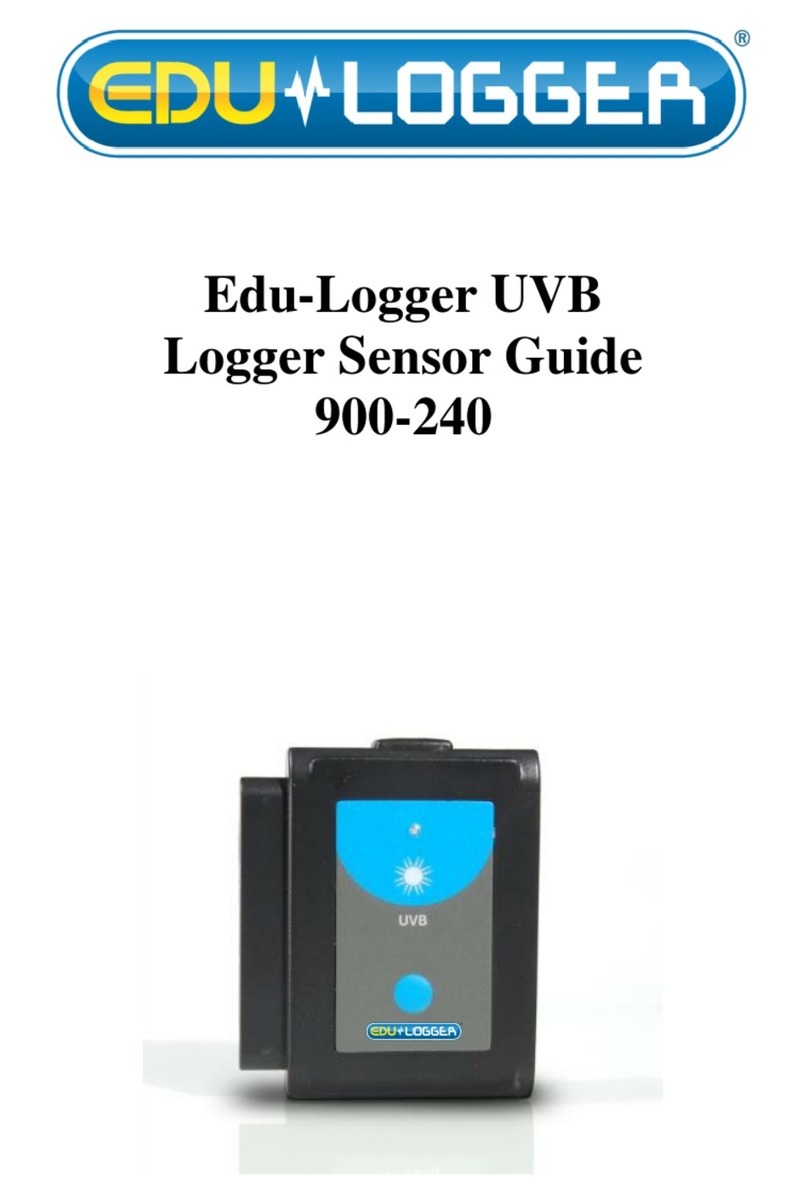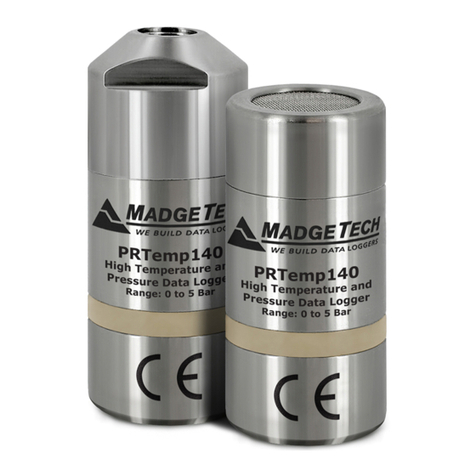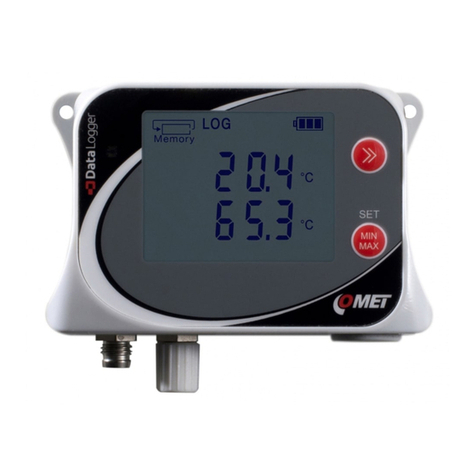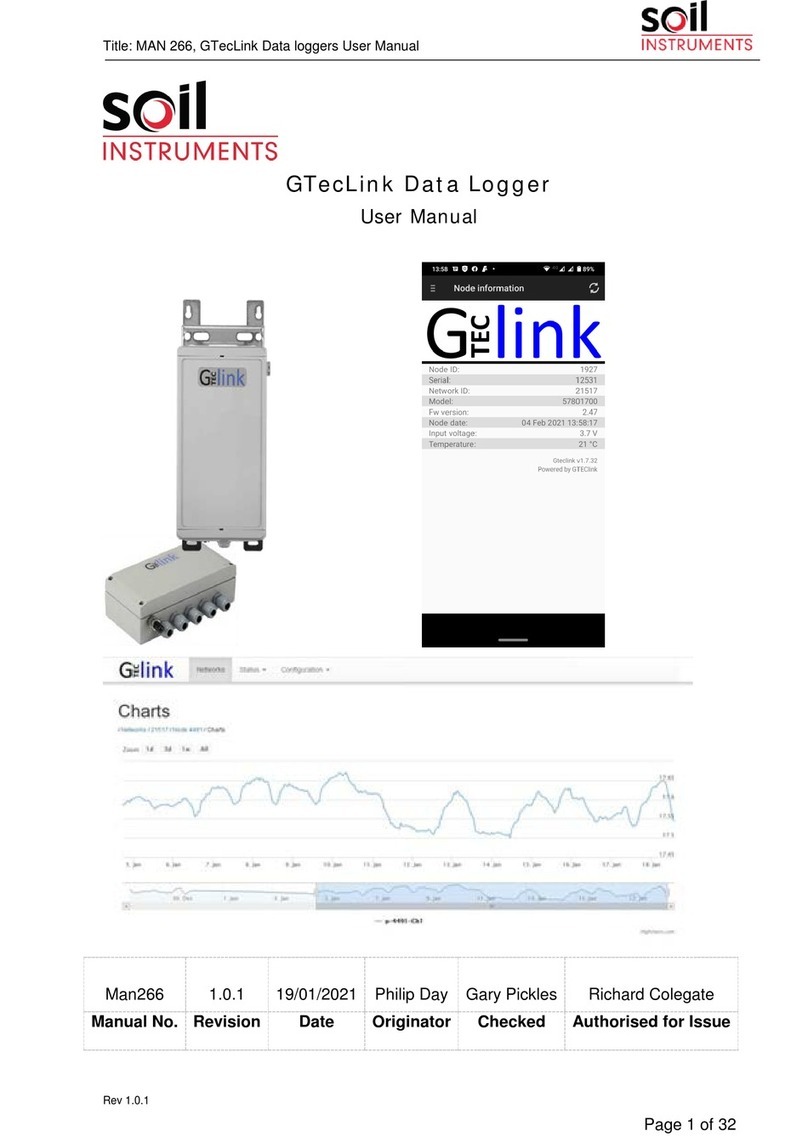
vi
_____________________________________________________________________
Notes on Use
______________________________________________________________
DANGE
The maximum input voltage is 600 V DC/AC. Attempting
to measure voltage in excess of the maximum input
voltage could destroy the instrument and result in
personal injure or death.
The maximum rated voltage between input terminals
and ground is 600 Vrms. Attempting to measure
voltages exceeding 600 V with respect to ground could
damage the instrument and result in personal injury.
Connection cords or clamp-on sensor should be made
only at the secondary side of a breaker, so the breaker
can prevent an accident if a short circuit occurs.
Connections should never be made to the primary side
of a breaker, because unrestricted current flow could
cause a serious accident if a short circuit occurs.
To avoid short circuits and potentially life-threatening
hazards, never attach the clamp to a circuit that
operates at more than the maximum rated voltage, or
over bare conductors.
WARNING
To avoid electric shock, do not allow the instrument to
get wet, and do not use it when your hands are wet.
To avoid electric accidents and to maintain the safety
specifications of this instrument, connect the power
cord provided only to a 3-contact (two-conductor +
ground) outlet.
To avoid electric shock when measuring live lines,
wear appropriate protective gear, such as insulated
rubber gloves, boots and a safety helmet.
Do not use the product where it may be exposed to
corrosive or combustible gases. The product may be
damaged or cause an explosion.
Notes on Use
Follow these precautions to ensure safe operation and to
obtain the full benefits of the various functions.

